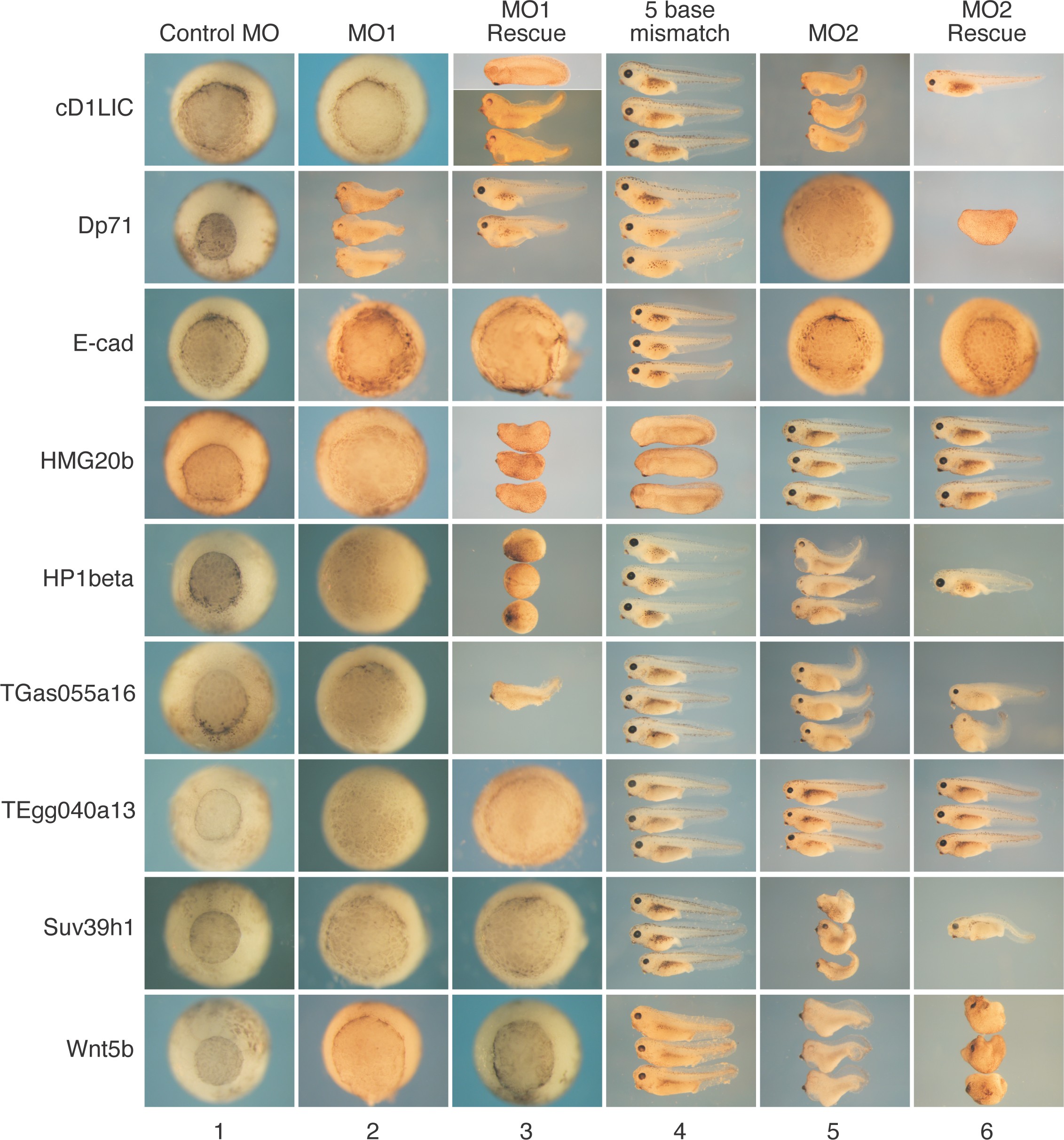XB-IMG-82970
Xenbase Image ID: 82970

|
Figure 15. Tests of the Specificities of the Phenotypes Observed in the Gastrula Defects Phenotypic Class
The specificities of the MOs used to define this phenotypic class were investigated by injecting 10�15 ng of the Gene Tools standard control MO (Column 1); the original antisense MO (Column 2); MO1 together with 1 ng of a form of the target RNA that lacks the MO target sequence (Column 3); MO1 (or, in the case of Dp71, MO2) with five mismatched bases (Column 4); MO2 (Column 5); MO2 together with 1 ng of a form of the target RNA that lacks the MO target sequence (Column 6).
The results of these experiments are summarized in Table 5. In Column 1 (control MO) embryos are shown at the mid-gastrula stage. Embryos in Column 2 (MO1) are at the same stage as those in Column 1, but (with the exception of Dp71) gastrulation is delayed or inhibited. In the case of Dp71, MO1 does not inhibit gastrulation but does cause embryos to develop with a shortened axis. Column 3 indicates that for five of the nine MOs studied, complete or partial rescue of the phenotype was obtained by injection of the cognate RNA. In these experiments, embryos were allowed to develop beyond gastrula stages to tailbud or tadpole stages. In the case of D1LIC, rescue was more complete at tailbud stages (upper panel) than tadpole stages (lower panel). Column 4 shows that for each of the nine MOs, changing five bases caused them to lose the ability to disrupt development.
Use of a second site MO usually causes a milder phenotype than is observed with MO1 (Column 5), but the phenotype is usually specific, in the sense that it can frequently be rescued by injection of the cognate RNA (Column 6).
MO1, original antisense oligonucleotide; MO2, second site MO.
doi:10.1371/journal.pgen.0020193.g015 Image published in: Rana AA et al. (2006) © 2006 Rana et al. Creative Commons Attribution license Larger Image Printer Friendly View |
